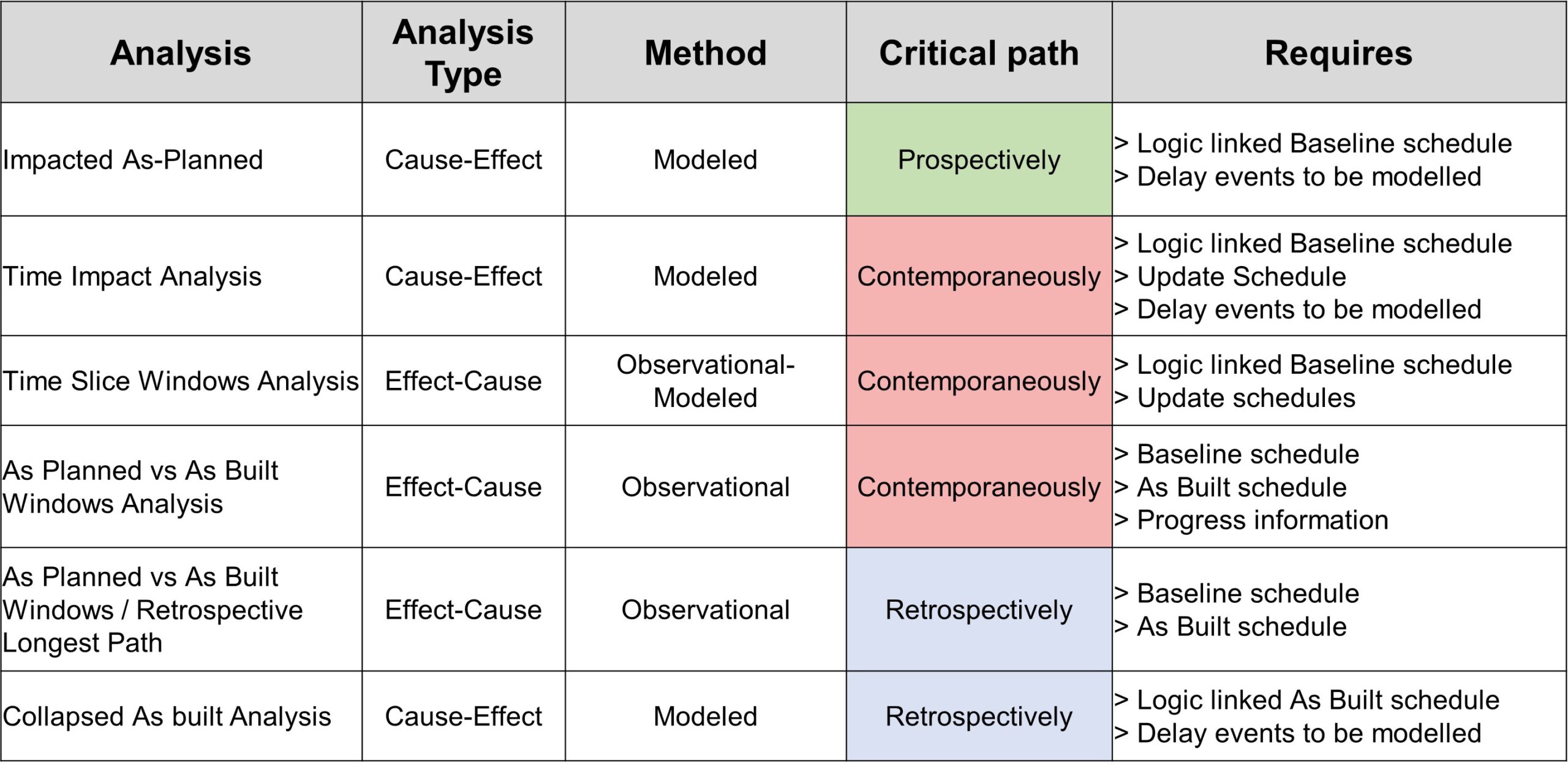When selecting a delay analysis methodology, several crucial factors must be taken into consideration to ensure the accuracy and effectiveness of the analysis. The choice of one of the six methods mentioned earlier, along with their variants, depends on the following key factors:
Contractual Requirements:
The contractual agreement may stipulate a specific delay analysis method to be used. When such requirements are explicitly stated, alternative methods are ruled out. However, in the absence of a designated method, the analyst has the freedom to choose an appropriate approach, always keeping in mind clauses related to critical path impact and causality of delays in the contractual term.
Time Constraints:
The timeframe available for conducting the analysis plays a significant role in method selection. When the deadline for requesting time extensions is limited, it’s advisable to use an analysis method that is relatively straightforward and efficient.
Purpose of the Analysis:
The intended objective of the delay analysis is an essential consideration. Whether the goal is to highlight specific delays, request a deadline extension, or prepare an expert report for legal proceedings will influence the choice of method.
Availability and Reliability of Information:
The availability of validated and reliable project documentation is crucial in method selection. The analyst must assess the presence of contemporary project records and identify which documents provide accurate information necessary for the analysis.
Analyst’s Skill and Resources:
The expertise of the analyst in performing delay analysis and their proficiency in using reliable tools significantly impact the choice of method. Being organized and knowledgeable in processing available information is also vital.
Dispute Resolution Forum:
The forum in which the analysis results will be presented and understood is essential. A clear and comprehensive report is crucial for effective communication with mediators or decision-makers. Depending on the forum, more complex and detailed analysis methods may be preferred.
Nature of Delay Events and Project Type:
The nature of delay events and the unique characteristics of the project may favor the implementation of certain methods over others. Projects with specific typologies may lend themselves more easily to certain analysis approaches.
Consideration of the Other Party’s Methods:
The analyst must take into account the method used by the opposing party to identify any potential discrepancies or gaps in comparison to their own chosen method.
For modeled methods, utilizing Primavera P6 is recommended due to its various advantages, such as flexible critical path calculation options, status date (data date) recalculations, activity grouping capabilities across multiple projects, and overall robustness.
By carefully evaluating these factors, delay analysts can make informed decisions regarding the most appropriate methodology for conducting accurate and reliable delay analysis. This ensures that delays are properly identified, assessed, and resolved in construction projects.

